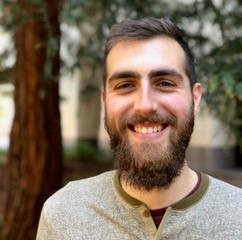Joshua Rapp wins 2021 IEEE Signal Processing Society Best Ph.D. Dissertation Award
 Boston University alumnus Joshua Rapp (Ph.D. ECE ’20) has won the 2021 IEEE Signal Processing Society Best Ph.D. Dissertation Award. Rapp, now a Research Scientist at Mitsubishi Electric Research Laboratories (MERL), was a student of CISE faculty affiliate Vivek Goyal, Professor and Associate Chair of Doctoral Programs (ECE) at Boston University.
Boston University alumnus Joshua Rapp (Ph.D. ECE ’20) has won the 2021 IEEE Signal Processing Society Best Ph.D. Dissertation Award. Rapp, now a Research Scientist at Mitsubishi Electric Research Laboratories (MERL), was a student of CISE faculty affiliate Vivek Goyal, Professor and Associate Chair of Doctoral Programs (ECE) at Boston University.
“I never imagined getting this award, and I want to credit Professor Goyal for being such a great mentor,” Rapp said. “Although a thesis is a very personal work, this research was really a collaborative effort. I’m amazed that my PhD led to this award, and I look back fondly on my time at BU.”
Rapp’s doctoral dissertation is the culmination of his groundbreaking work in expanding the capabilities of single-photon lidar (SPL) systems, a technology for depth sensing with applications including scientific measurement and autonomous navigation systems. His dissertation describes his work in probabilistic modeling and algorithm development to increase robustness of SPL to high ambient light. In his research, Rapp also developed new approaches to improve data acquisition times by addressing the dead times of conventional instruments and to improve accuracy by creating a dithered lidar system. Rapp’s doctoral research also included inventing a method of non-line-of-sight imaging using processes that could be more easily implemented in real-world settings.
“Forming depth maps quickly and precisely is a difficult problem to solve through hardware alone,” says Rapp. “We need to understand the factors affecting each photon detection and harness that information so that accurate depth measurements can be made in short timeframes and from very little light. Using very little light efficiently enables data to be collected faster.”
High ambient light can affect the precision of depth estimates. For example, if a car is driving in the daytime, the light reflected from the lidar system is much weaker than the ambient light, making it difficult to accurately measure the time of flight. Rapp tackles the issue of depth imaging despite strong background light in his paper titled “A Few Photons Among Many: Unmixing Signal and Noise for Photon-Efficient Active Imaging”. This paper describing Rapp’s methods for making SPL with few detected photons 25x more robust to ambient light received the 2020 IEEE Signal Processing Society Young Author Best Paper Award.
Rapp’s dissertation also describes a new method to reduce the distortion in reflectivity imaging by mitigating the dead time effects of current instrumentation. In his paper “High-Flux Single-Photon Lidar,” he establishes a new way of modeling the absolute sequence of photon detection times as a Markov chain. This method expedites data acquisition over a large range of reflectivity values. For autonomous navigation, this capability reduces the potential of hazardous driving because an object with high reflectivity, such as a road sign, could otherwise prevent the sensors from seeing an obstacle in the distance.
Rapp also collaborated on development of a novel method of non-line-of-sight imaging using SPL and visible edge occluders, such as walls, to map out large-scale scenes that are hidden from direct view. In experiments, the researchers demonstrated the ability to form 2.5-dimensional images of large hidden rooms, up to 3 meters in each dimension, with a 180-degree field of view. Impressively, only 45 measurement locations were required, far fewer than the thousands of points typically required.
“It’s rare to find a dissertation with such breadth and depth,” said Goyal. “Josh was working at a high level of conceptual innovation, yet he also held himself to an extremely high standard in experimentally demonstrating these innovations. He was constantly overcoming barriers and turning conventional wisdom on its head.”
Rapp’s interest in computational imaging stemmed from his experience playing in a band in high school. When he discovered how much of music recording is electrical engineering, he became fascinated with the process of converting physical properties into electrical signals.
Rapp hopes his research can be applied to autonomous vehicles to make transportation more accessible and reduce traffic fatalities.
Rapp’s dissertation, entitled “Probabilistic Modeling for Single Photon Lidar” can be read here.
by Zoe Teng, CISE Staff Writer